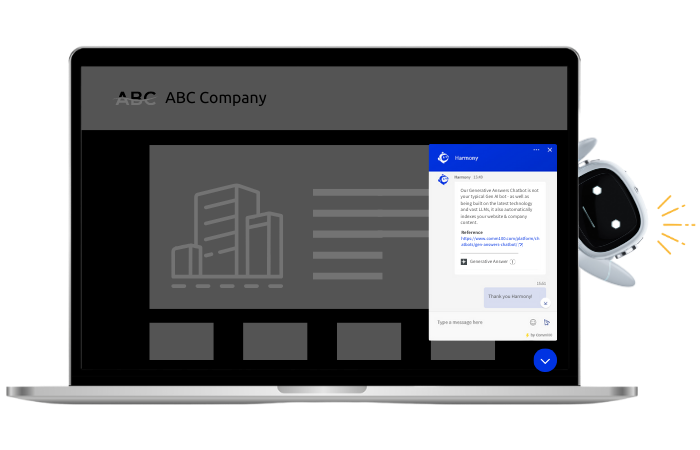Holiday shopping season isn’t easy. Even for the most well-organized customer service functions, seeing query volumes and queues rise into the red can be a hair-raising and difficult experience to handle.
When it comes to holidays some things don’t change, like presents under the tree, turkey at Thanksgiving, and even customers’ expectations of service. A difficult shopping experience during the holidays can deter them from coming back and leave businesses with less than favourable reviews, and the resulting impact can be felt all year round.
64% of retailers are preparing internally to meet customer expectations this holiday season by transforming processes to become more agile and customer-focused. Prioritizing the customer experience when getting your customer service team ready for the season can help mitigate this and remove friction from customer interactions.
Set your agents up for success
Getting your agents prepared is key to delivering great holiday season customer experiences. Making sure agents are well equipped to handle high volume and high demand will go a long way in delivering quality customer support.
Giving your agents training to familiarize themselves with crucial product and process knowledge is a must. Ensure you leave a good amount of time not just for training sessions to occur, but also for agents to grow confident with their new knowledge by simulating scenarios themselves or roleplaying with other colleagues. Rolling out training the day before sales begin is usually a recipe for disaster, as staff won’t have had the time to grow fluent with the new information they’ve learned.
Forecasting the query volumes you might receive is crucial to putting a realistic plan together. You can use historical data, factor in your recent promotional efforts and balance this against your team’s existing handle times to project what headcount you might need, leading to less headaches when things get busy.
Here are some tips to help train your agents to handle holiday season peaks:
- Run practice sessions with your agents with different scenarios so they know what to do when it’s time for the real deal. Over a range of scenarios, test their abilities as they relate to communicating about holiday-specific policies and processes, handling queries within certain time limits, and escalating queries where extra help might be needed.
- Give consistent and honest feedback so your agents have the chance to learn and improve their skills. This should include clear expectations for key KPIs that will help you maintain SLAs and ensure customer satisfaction. Harness your agent’s self-assessment capabilities by asking them how they think they did just as much as you give them your own ideas and perspective.
- Have clearly documented learning materials available for reference if an agent is unsure how to proceed, and host them somewhere that’s easy to access and update.
Well-trained agents mean happier employees, higher quality customer service and in turn, happier customers. Great service doesn’t happen by accident, so don’t leave training to chance – it’s a make-or-break factor that when paid attention to, always pays dividends in customer happiness.
Reduce wait times with real-time support
Holiday season for contact centers and support teams alike mean one thing: high call volumes. From pricing to return policies to shipping times, there are all sorts of customer queries that come in during the busiest season of the year.
This usually results in longer waiting times, unresolved queries, and frustrated customers. We’ve all been there, trying to reach customer support to ask about stock for this one present that would just be absolutely perfect, only to be told that wait times are up to one hour – or worse, waiting for the hour and having the call drop. For online shopping especially, it’s experiences like this which directly impact on your customer’s choice to shop with you, or shop with a competitor.
Businesses can curb this negative customer experience by making it easy for customers to reach them in real time with live chat. Agents can typically handle around three chats at any one time, compared to traditional support channels like the phone which limit you to one customer at a time. Not only can you reduce wait times but there’s potential cost and headcount savings too, while customers save time and can easily carry on their day while their query is being resolved.
Holiday shoppers are drawn to online shopping for its convenience and flock to live chat for the same reason – the ability to get answers right at the moment they want to make a purchase. Just like online shopping, live chat gives the customer the freedom to connect with you on their own terms, especially during a busy holiday season.
Here are some tips to help train your agents to handle holiday season peaks:
- Place the live chat button in high traffic areas where people might have potential queries. For example, the checkout page, pricing page, and even the search results page.
- Use proactive chat invitations to reach out to potentially struggling customers – for example, where a customer has been on the checkout page for a long time, or if a customer hits a “payment unsuccessful” page.
- Prepare canned messages for commonly asked questions (e.g. shipping times and return policies) to quickly resolve customer queries.
Customers appreciate the convenience of being able to use live chat so they can get quick answers and continue along with their holiday shopping. 79% say they prefer live chat because they get their questions answered quickly, while 51% prefer using chat because they could multi-task. The better the customer experience you provide, the more likely that customers will come back.
Email, Social Media & SMS
Manage all your customer inquiries from email, social media, and SMS on one robust and easy-to-use platform. You’ll wonder why you never did it this way before.
Learn more
Comm100 Social & Messaging
Let your customers help themselves
If you had to choose between calling a business to ask about operating hours or looking it up on their website, which would you choose? If you said website, you’re in the 81% who said they chose to look for information on a company’s website over calling.
While live chat can help provide real-time customer support, it’s not ideal for your agents to be spending time fielding every single frequently asked question about shipping times. If you can make it easier for customers to find answers to those FAQs themselves without relying on your agent team, then you can achieve operational savings while removing friction from the journeys of many of your customers.
Offering a self-serve option, like a knowledge base, that allows customers to find answers when and where they want is one way to provide excellent customer service during the busy holiday season and beyond. The beauty of knowledge bases is that they’re always on and require almost zero effort by the customer. If customers have a question, they can look it up as they’re shopping on their own time and be on their way.
Here are some tips to make the most of a knowledge base:
- Identify a person to “own” your knowledge base. This person should be responsible for keeping content clear, consistent and up-to-date, as well as keeping an eye on ratings and suggestions from your customers and making amendments accordingly.
- Keep the most commonly asked questions at the top of your knowledge base. Use tags or categories to give your customers a range of ways to find the article they need.
- Take advantage of knowledge base metrics so you can tell which articles are most used or most helpful. Revise articles that customers have marked as “not helpful” and look to add extra pages where your team identify that they could be useful additions.
Businesses that provide a knowledge base for self-help can free up their agents’ time, which is often better used in more complex and challenging scenarios. Having a knowledge base helps companies quickly build a dynamic FAQ system, empower customers to self-serve and reduce support workload.
And remember to listen
The holiday season is a time for friends, family, and celebration. It’s also one of the busiest times for customer service agents, who are a crucial part in creating amazing customer experiences and delivering quality support. Sometimes in the hustle and bustle of the season, agents can get lost in the workload and become overwhelmed.
Having the right technology and tools in place, together with a well-trained agent team, means that agents don’t need to struggle with systems or process misunderstandings and can focus on what truly matters – helping your customers.
When the season finally hits and volumes ramp up, your work isn’t quite done – the final part of the holiday success equation is listening and being perceptive to ensure you’re on the pulse of what your agents need to do their jobs well. Sometimes, this means just paying attention to the little things. One year, I noticed that my team were skipping getting up to get a drink as they didn’t want to negatively impact the queues. Noticing things like this and reacting to help – in this case, taking orders for a coffee run – helped make a real difference to their happiness and productivity.
Listen to your team’s feedback throughout the busy period and be reactive about making suggested improvements. Spending all day with customers in the front lines, your agents best understand what the customer’s needs truly are. Being prepared and keeping an open door will help ensure your customer service team is ready for the holiday season.
Download now: Improve Your Customer Experience: An Action Plan for CX Success
This eBook contains best practice tips from the CX field, encompassing methodologies like Six Sigma to ensure your pathway to customer experience improvement is clear and straightforward.
Download Now
eBook








